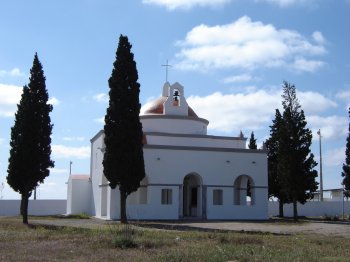Explore the best places
Monuments in Beja
Igreja Matriz de Beringel
- heritage
Largo Padre António Alfaiate Marvão
7800-826, Beringel
There’s a portal of masonry work with a circle arch sided by columns and ended by a fronton with the arms of the counts of Prado. Also worthy of notice are the golden carving altar pieces and the representation of the Jessé Tree.

Igreja de Nossa Senhora da Conceição
- heritage
Rua da Alfarrobeira
7800-802, Beringel
Plant with nave, main chapel, bell tower, vestry and Casa dos Milagres (house of miracles). Inside stands out the chapel of São João Baptista with golden carving retable and painted panel with Christ’s Baptism. At the house of miracles are worthy of notice the painted panels with the “Birth of the Virgin” and the “Presentation of the virgin in the temple”.
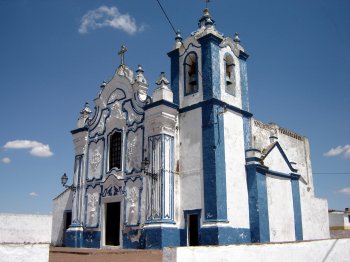
Igreja de Nossa Senhora do Pé da Cruz
- heritage
Rua do Pé da Cruz
7800-047, Beja
This church is dated from 1696 and it presents a baroque construction in which stand out the glazed tiles from the 17th century and the gold carving. The interior is richly decorated with a big diversity of colours on the coverage, paintings and canvas, contrasting with the exterior façades.
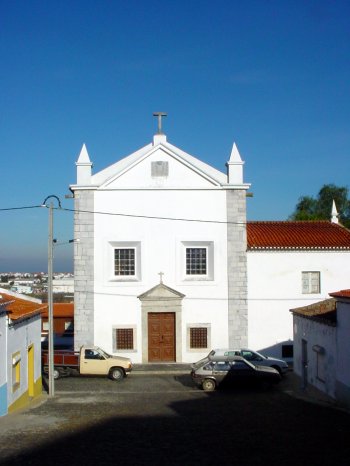
Igreja de Nossa Senhora dos Prazeres
- heritage
Largo dos Prazeres
7800-420, Beja
This chapel is dated from 1672 and it is composed by two distinct bodies. The simple façade does not denunciate the artistic richness on its inside. Here it is possible to find one of the most important repositories of sacra art in the city and a joint of beautiful glazed tiles composed by historian panels from 1698 done by the painter Gabriel del Barco. The church body is covered by baroque carving and glazed tiles from the 18th century.
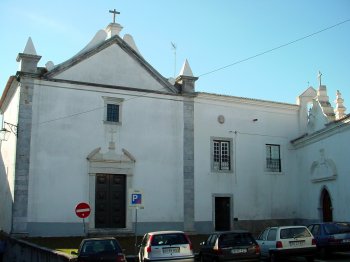
Igreja de Santa Maria
- heritage
Largo de Santa Maria
7800-133, Beja
Santa Maria Church is placed in a square with old buildings from which we stand out the Torrinha house, the former building for the City Hall and another Manueline building with a Coat of Arms on the door. It still preserves the apse structure, the porch, the baroque altars and the “Tree of Life” represented on a lateral chapel. It has undergone some transformations on the 15th, 16th, 17th and 19th centuries and it was restore in 1960. The classification as a Property of Public Interest includes the joint of buildings belonging to the church and to the attached watch …

Igreja de Santo Amaro / Museu Visigótico
- heritage
Largo de Santo Amaro
7800-263, Beja
This monument was built outside the city walls on the place where it used to be an ancient – Christian basilica; the exact date of its foundation is unknown. Its present configuration is the result from the alterations and transformations operated, mostly during the 15th and 16th century. This church shelters the Visigoth Museum Queen Dona Leonor. Here it is possible to admire the biggest ensemble of Visigoth capitals existing in Portugal.
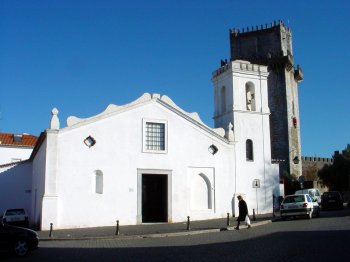
Igreja de São Brissos
- heritage
Largo da Praça
7800-741, São Brissos
In this church the Manueline apse stands out, having on both sides two cylindrical small turrets and the limestone font of S. bissos.
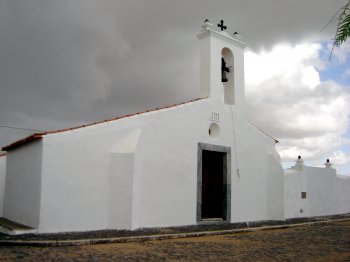
Igreja da Misericórdia de Beja
- heritage
Praça da República
7800-427, Beja
Originally intended to house the municipal butcher shops, this building was donated to the Irmandade da Santa Casa da Misericórdia was considered too lavish for the purpose intended. Mixture of secular and religious architecture, form an original set of strong Italian influence Renaissance, inspired by the famous loggia of the city of Florence. Outdoes Colonnade on square plan.
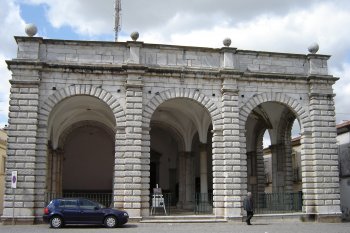
Ermida de Santo Estêvão / Ermida do Espírito Santo
- heritage
Rua Dom Manuel I
7800-306, Beja
This is one of the oldest chapels of Beja, founded in the end of the XIII century as the vault of the knight Estêvão Vasques. In 1915 it was given to Santa Casa da Misericórdia of Beja, and ended up as a barn. In 1940 it was restored and reopened to cult. It is a chapel with a single nave and main chapel, totally arched, a characteristic of the gothic style during D. Dinis period, with French- Burgundian influence. During the Baroque period the façade was enriched and in the beginning of the XX century some neo-gothic elements were introduced, …
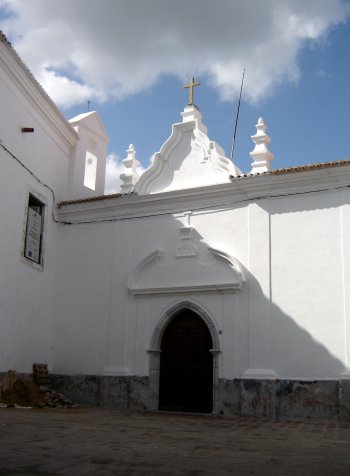
Ermida de São Pedro
- heritage
Estrada de Serpa - EM1091
7800, Beja
Small temple built during the XVII century, which aimed to be a replica of the Saint Peter’s church in Rome. It presents an interesting and single church porch, typical from Alentejo. The cupola and the lantern-light are the elements that define the side view of the chapel giving it a certain grace.
